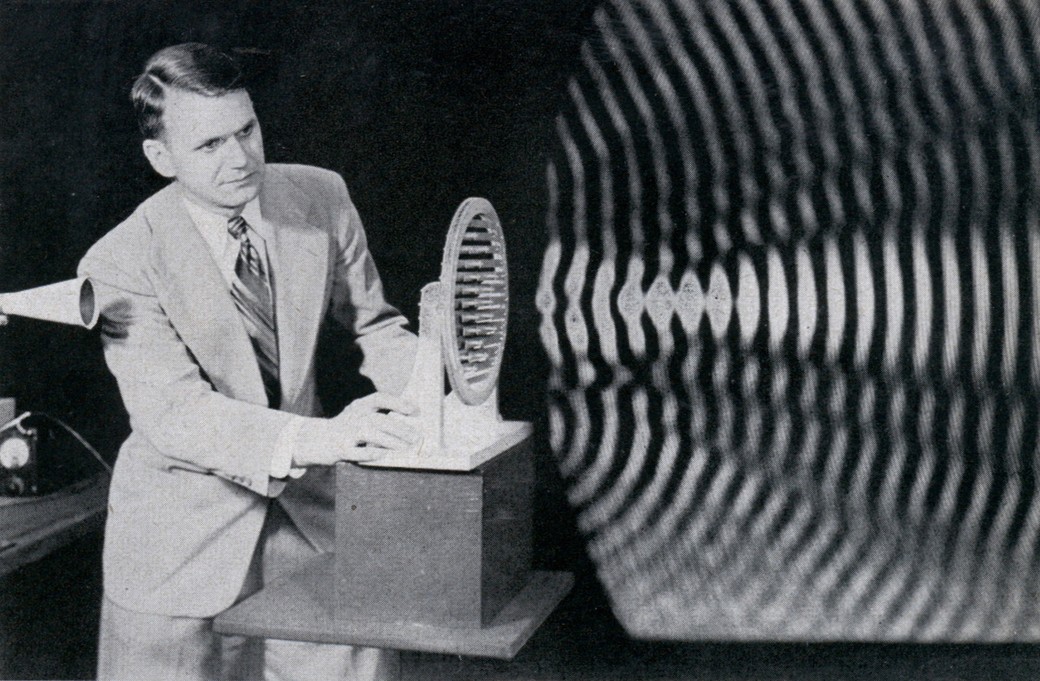
Astounding Soundwaves
Above: An example of how sound waves expand from a central point. Photo credit.
Sound is something most people experience almost every minute of every day, and so it is easy to take for granted. However, even something as simple as sound can be used to create powerful tools when combined with advanced technology. Sonic devices may not be as common in science fiction as laser or plasma technology, but that does not mean sonic technology has any less potential.

Perhaps more than any other work of science fiction, the Doctor Who television series has made people aware of the possibilities of sonic technology. The Doctor is rarely seen without his sonic screwdriver, a handy device that seems to be able to perform almost any task required of it.
Although the promise of a nearly universal tool is still a long way off, ultrasonic engineers at the University of Bristol are experimenting with technologies that may one day lead to a real-life sonic screwdriver. These experiments are focused on the idea of using powerful ultrasonic sound waves, far beyond the range of human hearing, to move objects. It is likely the objects that can be moved will be very small at first, but the engineers are already investigating ways to spin these sound waves into vortexes. If this technique is perfected, it could mean in the near future DIY types everywhere will be tightening and loosening screws with sound.

Home improvement is not the only area where sonic technology could prove useful in the future. A pair of undergraduate students at George Mason University has recently developed a device to put out fires with controlled sound waves. This new fire extinguisher works by using the vibrations caused by low frequency sound waves to push oxygen away from a fire, starving it and quickly putting it out. The full limits of this new system have not been explored yet, and it may not be useable against very large fires, but its lack of reliance on chemicals, foams or liquids means it could be deployed in areas where ordinary firefighting equipment would be unsuitable.
Besides use in the home, this system could be deployed in space stations, server rooms, electronics warehouses and other areas where the chemicals and foams used by other systems could cause a great deal of damage. There is already consideration of mounting a version of this system into stovetop vapour hoods and potentially even mounting it on drones for use in fighting larger fires.
The ability to use sound for a variety of uses is an interesting development, but there are also times when people want to keep sound away. Whether trying to protect a submarine from sonar detection, or simply trying to enjoy a movie at the theatre, being able to control where sound goes and doesn’t go is a valuable thing.

An engineer at Duke University believes he has found the secret to doing just that. He has created a plastic, pyramid shaped object filled with carefully placed holes. These holes, and the air within the pyramid, allow sound waves to flow through the pyramid without touching the object placed inside. Since the sound waves are not touching the object they cannot reflect off of it, making the object within the pyramid invisible to sonar. Besides the military applications of using this technology to hide submarines and ships from detection, this technology could be used to better control and manipulate acoustics within buildings. Through using this material, architects could decide exactly where sound would go, allowing for greater clarity and volume in places like movie theatres, lecture halls, and conference centres.
Sounds are such an everyday thing for most people that we often take it for granted, but hidden within those very sounds is a huge well of untapped technological potential. Only the future can show what other advancements in the field of sonic technology will be made within the coming years.








